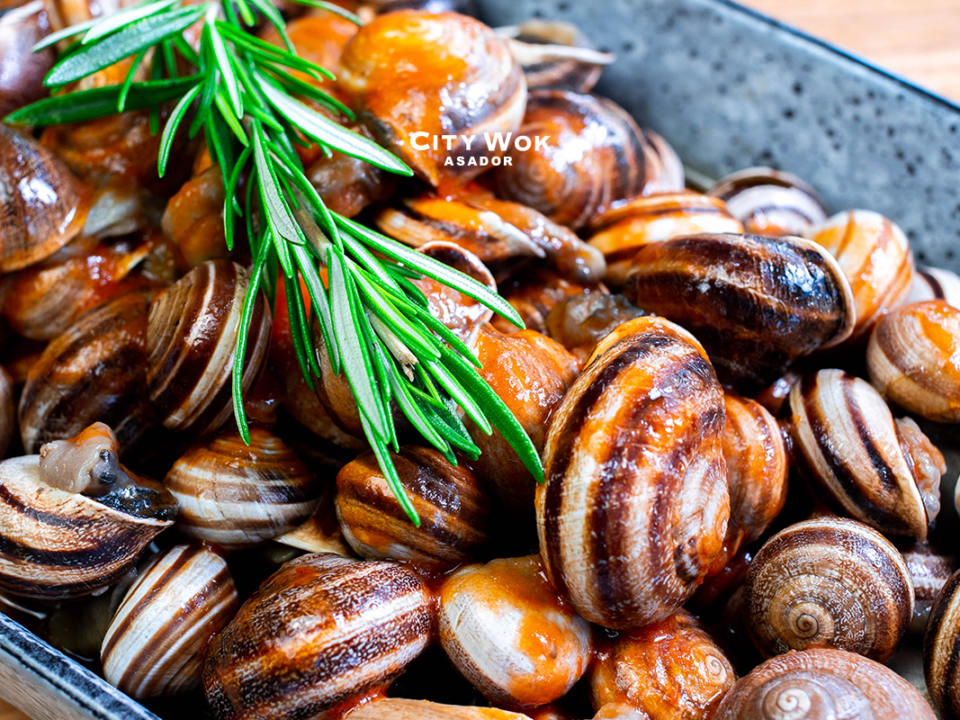Descubre la increíble variedad de pizzas que existen

Da igual el lugar, día u hora, no vamos a decir no nunca a una deliciosa pizza, una palabra que describe a la perfección esa masa con ingredientes tan variados como podáis imaginar. Conviene saber que la primera pizzería como tal que hubo en el mundo se remonta al año 1738, en la ciudad de Nápoles donde se montó la pizzería “Port´Alba” que, en 1830, se convirtió en restaurante y así lo sigue siendo todavía a día de hoy. Los más expertos en este delicioso alimento declaran que en este lugar se sirven las dos pizzas auténticas, la Marinara y la Margherita. En Asador City Wok Elche podrás disfrutar de exquisitas pizzas italianas en nuestro buffet libre, y en este artículo vamos a descubrir algunas de las consideradas más deliciosas en todo el mundo.
Marinara
Compuesta por salsa de tomate, orégano, aceite de oliva, ajo, albahaca y un poco de sal, esta es la pizza más antigua de todas. Uno de sus rasgos más distintivos es su ausencia de queso como ingrediente, el cual suele ser habitual en todas las pizzas actuales. Su nombre se deriva de que los marineros la solían llevar en sus viajes a alta mar porque tenía grandes propiedades de conservación.
Margherita
La forma de esta pizza recuerda a la bandera italiana, ya que encontramos el color verde de las hojas de albahaca, el blanco por el queso mozzarella y rojo por los tomates. Sus ingredientes principales son los siguientes: tomate, ajo, una pizca de sal, aceite de oliva, queso mozzarella, y media taza de queso parmesano rallado. Deliciosa.
Sfincione
Aunque algunos entendidos sostienen que solo la pizza marinara y la margherita son las verdades pizzas, el resto de italianos no dudó la ocasión de, a estas dos pizzas, añadir variedades más particulares de una región o ciudad concreta. La Sfincione es un ejemplo de esto último, la cual es típica en la ciudad de Palermo, Sicilia. Es una pizza esponjosa y cuadrada, con 1 centímetro de grosor. Contiene tomate natural, cebolla, aceite de oliva, un poco de sal y azúcar, anchoas, champiñón, pollo, queso idiazábal, tomillo y orégano.
Fugazza
A pesar de inspirarse en las pizzas italianas, la fugazza es característica de Argentina. A diferencia de la pizza napolitana, aquí se coloca más levadura y la masa es muy esponjosa. Contiene cebollas rojas y dulces, un poco de sal, aceite de oliva, queso parmesano, aceitunas verdes y orégano.
Chicago Pizza Style
Muchos inmigrantes italianos en Estados Unidos convirtieron algunas de sus principales ciudades como Nueva York o Chicago en grandes “ciudades pizzeras”. En esta última, encontramos una variedad que se cocina en una masa con un poco de harina de maíz para, posteriormente, ser horneada en un plato metálico cuyo fondo se baña con aceite de oliva. Los bordes de la masa son gruesos para poder ser rellenado y el fondo está tostado porque tiene que soportar un elevado peso por parte del tomate y queso mozzarella.
La pizza mexicana
Una de las más estrambóticas pero no por ello deliciosas. En México, poseen su pizza típica con sabores muy fuertes y picantes. Contiene una gran variedad de ingredientes y los hay más típicos, como el tomate, cebolla, queso mozzarella, aceite, pimiento o ajo a otros característicos de esta pizza como un sofrito de carne, salsa tabasco, aguacate o pimentón dulce. Un plato que hay que probar al menos una vez en la vida
Como podéis ver, la popularidad de las pizzas se ha extendido por todo el globo y eso ha hecho que cada lugar haya experimentado con nuevas variedades de este delicioso plato italiano. En Asador City Wok Elche podrás degustar una gran diversidad de pizzas italianas, y si eres de los que no se sacia fácilmente, no te preocupes. Gracias al buffet libre podrás repetir cuantas veces quieras sin pagar más que la primera vez.
En el mejor Restaurante wok Buffet Libre podrás degustar de una deliciosa pizza junto a tus amigos, pareja o familiares con los que seguro pasarás un momento inolvidable. Síguenos en nuestros perfiles oficiales en Facebook e Instagram para ver toda nuestra actividad. ¡Te esperamos!



